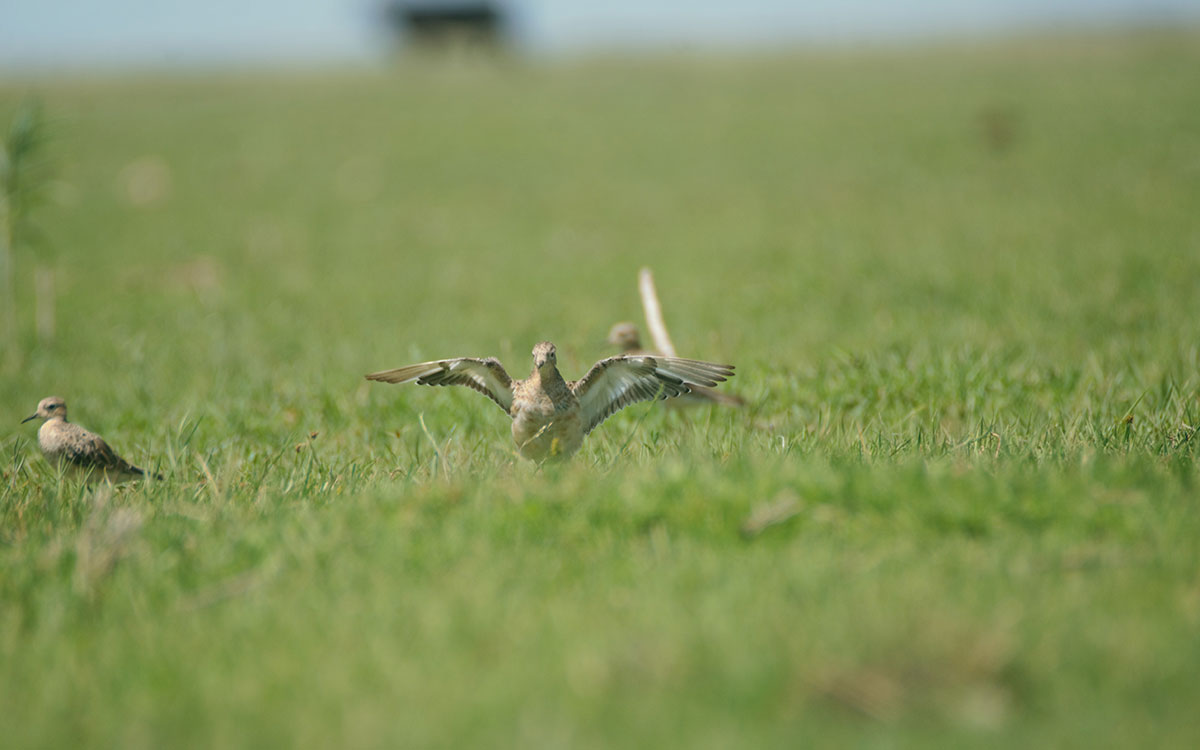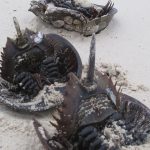The grasslands in southern South America, also known as pampas, cover parts of Southern Brazil, Uruguay, Southern Paraguay and East and Central Argentina. The region is known as the main non-breeding habitat of the American Golden Plover (Pluvialis dominica) and the Buff-breasted Sandpiper (Calidris subruficollis), but it also used to be the main non-breeding area for the Eskimo Curlew (Numenius borealis), which is now believed to be extinct.
Several WHSRN sites that fall within this grassland region were nominated to the network based on a significant presence of the Buff-breasted Sandpiper. These sites include Lagoa do Peixe (a Site of International Importance in Brazil), Laguna de Rocha (a Site of Regional Importance in Uruguay) and Bahía Samborombón (a Site of International Importance in Argentina).
Another potential key site in the pampas of Argentina that has historically received particular attention from ornithologists and naturalists is Estancia Medaland, especially due to its abundance of migratory grassland shorebirds. The ranch covers approximately 7,500 hectares (more than 18,500 acres) and is used primarily for cattle ranching on natural pastures. Studies in the 1970s showed relatively large numbers of Buff-breasted Sandpiper, reaching a total of 2,000 individuals. But surveys by the Southern Cone Grassland Alliance over the last decade have resulted in much lower counts, leaving Estancia Medaland below the threshold required for a WHSRN site nomination.


Buff-breasted Sandpipers (Calidris subruficollis) at Estancia Medaland. Photos: Natalia Soledad Martinez Curci.
However, local fieldworkers believed that Estancia Medaland was still an important site for grassland shorebirds, and they suggested it was crucial to carry out a comprehensive survey.
In December 2017, the WHSRN Executive office supported a team of seven shorebird biologists to carry out this extensive shorebird survey at Estancia Medaland. The team was made up of Natalia Martínez-Curci, Ángeles Loredo, Juan P. Isacch, Matías Pretelli, Matilde Cavalli, Germán García and Nicolás Chiaradia. They split into three groups to cover as much terrain as possible.
The effort resulted in a total count of 7,117 shorebirds belonging to 13 species of 3 families. Of these birds, 95% were Nearctic migrants and 5% were resident shorebird species. Characteristic of the pampas region, the most abundant species were the American Golden Plover and the Buff-breasted Sandpiper, with counts of each that reached or surpassed the WHSRN threshold level of 1% of their global population. The total count of American Golden Plovers reached 4,500. The Buff-breasted Sandpiper numbers were especially noteworthy, with a total count of no less than 1,010 individuals – or 1.8% of the species’ global population.

Buff-breasted Sandpiper (Calidris subruficollis) at another grassland WHSRN site in Argentina, Bahía Samborombón. Photo: Brad Winn.
The comprehensive survey clearly showed that Estancia Medaland is still a key site for grassland shorebirds. The process to nominate Estancia Medaland as a WHSRN Site of Regional Importance is now underway, and we hope to soon celebrate the addition of this important site to the network.






